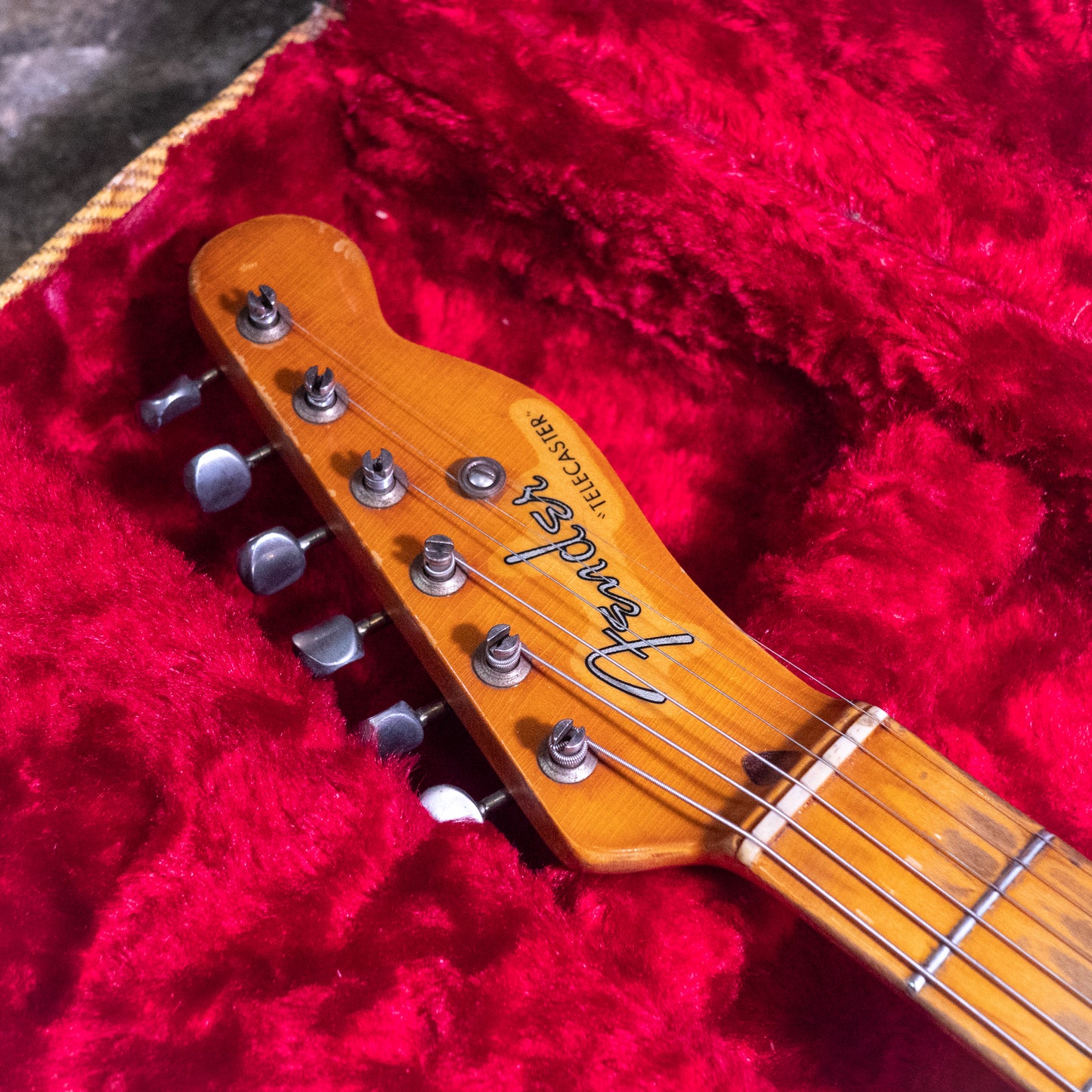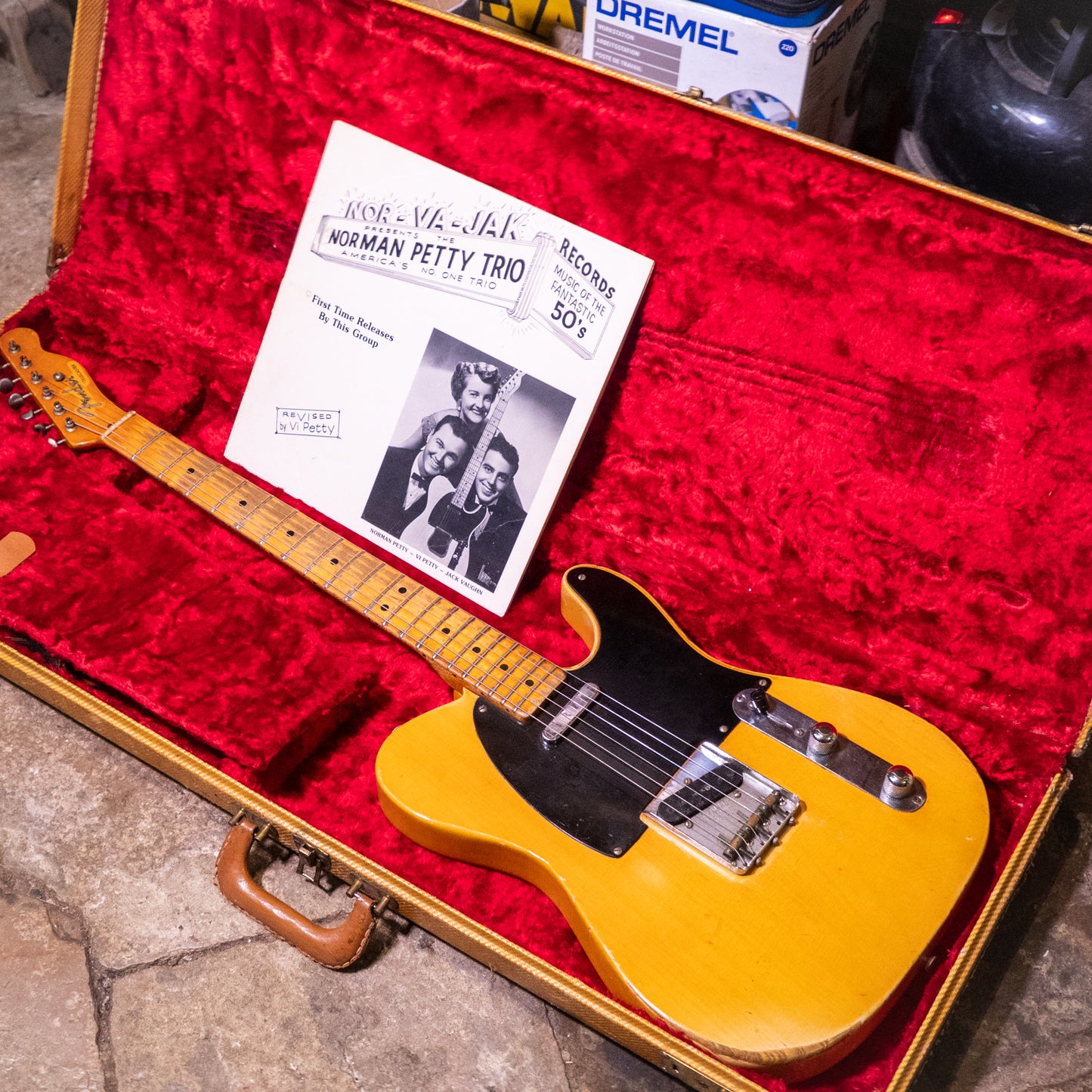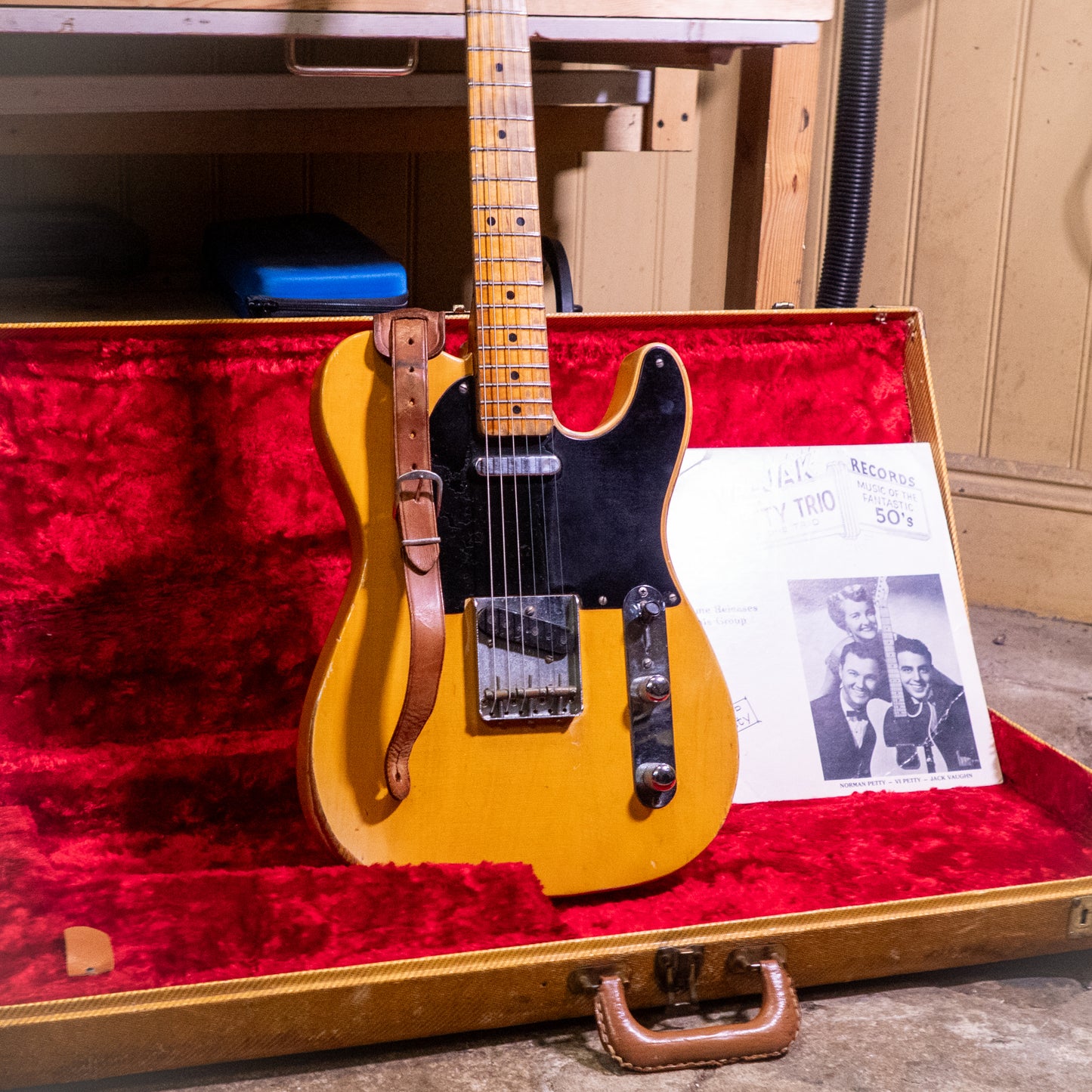Fender
1952 Fender Telecaster
1952 Fender Telecaster
Couldn't load pickup availability
Share
An early '50s 'Blackguard' Fender Telecaster is one of the most valuable and sought-after guitars among vintage guitar enthusiasts. These solid body electric guitars mark the beginning of the Fender's unparalleled impact on popular music. The Telecaster was the first guitar to make Fender a household name, building on their earliest steel guitar designs to make something that could be readily available to the masses. This 1952 Fender Telecaster from the first full production year of the model, is a fantastic example with an equally captivating back story.
This guitar was previously owned by Jack Vaughn, guitarist with the Norman Petty Trio and studio musician at Norman Petty Studios in Clovis, New Mexico. Norman Petty was a record producer and music publisher who opened a recording studio in New Mexico in 1954, where he would also operate the Nor-Var-Jak Music label from during the same decade. Over the course of his career, Petty recorded and produced the first recordings of Roy Orbison, along with sessions for Waylon Jennings, Trini Lopez and Glen Campbell. However, his greatest contribution to early rock'n'roll would come from his work with Buddy Holly. Petty produced the majority of Holly's recordings from 1956 until his death, including both 'That'll Be The Day' and 'Peggy Sue' for the Brunswick label, both of which would propel Holly to stardom.
This guitar comes with provenance from the family of Jack Vaughn, along with a Norman Petty Trio record that features this Telecaster on the cover. There is also a copy of a receipt from when the guitar was sold by the family in 1988, stating that the guitar was often in the studio in Clovis, and was used by various artists during sessions, including Buddy Holly. While there is nothing further to substantiate this claim, and unfortunately no photo evidence, this guitar certainly has an exceptionally interesting back story, and is a piece of music history in its own way.
Constructed from an Ash body and finished in the butterscotch blond lacquer seen until mid 1954, this guitar features a 'TG' 21-3-52 neck pocket pencil date, dating it to March 1952, and also indicating that it was crafted by revered Fender employee Tadeo Gomez. The body cavities show all the usual router tooling marks, along with 4 pristine 'lazy Susan' pin holes under the pickguard, bridge plate and control plate, authenticating the finish as original. The original hardware is present and correct, with the black Bakelite guard showing the signs of aging and play wear that you would expect. There is a mixture of flat head and phillips head screws used, as this was during a transition phase for Fender, with flat head screws used for the pickguard as well as the truss rod adjustment, and Phillips head neck plate screws. The original knurled, chromed plated, round topped knobs are in place, along with the original Dak-a-Ware pat. pending switch tip.
The neck is a typical early '50s 'D' shaped profile, with wear through the majority of the lacquer to the rear of the neck, and a substantial amount of wear to the fretboard, although nothing that affects playability. The neck butt again features a 'TG' pencil marking, dating to 4-8-52. The headstock features the original 'no line' Kluson tuners, along with the round button string tree found on early models. We have put the yellowing of the finish on this example down to exposure to cigarette smoke in the studio rather than UV exposure, which also explains why the area of wood around the original Fender decal has remained so clean and unyellowed, with the decal acting as a seal around the wood beneath.
The electronics have sustained some changes over the years, but are functioning as they should. Both flat pole, single coil pickups are original and appear untouched, with the original cloth wire and base plate on the bridge, along with the adjustment screw grommets. The wiring features the original 'woof tone' set up in the neck position, with one original box capacitor coming off the switch and a non original Mallory capacitor between the two pots. The pots have been changed at some point in the guitars life, with the volume and tone dating to the end of 1956 and mid 1958 respectively (137 642 & 137 825.) There is also evidence of the ground wires being resoldered, and some solder joints being reflowed. The original 3 pat. no. CRL switch is present and correct.
This guitar also includes a slightly later '50s Koylon lacquered tweed case in good condition, and what would appear to be the original ashtray bridge cover. As mentioned previously, a Norman Petty Trio record featuring the guitar is included, along with a copy of the sales receipt made out in the name of Jack Vaughn's son.
As with all our instruments, this 1952 Fender Telecaster has been given a full service and appraisal by our luthiers at the Vintage Instrument Workshop, and includes a 3 year warranty.








































